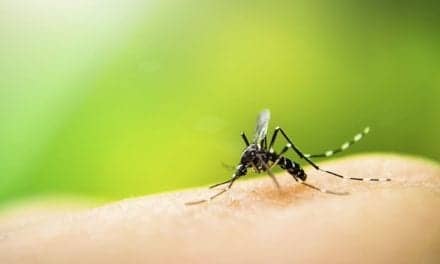Researchers at Virginia Tech discovered that the bacterium that causes Lyme disease has a highly unusual modification in its protective molecular bag—its peptidoglycan, which is common to all bacteria.
The change in this bacterium is unprecedented—it’s an unusual sugar modification that is not known to occur in any organism. One way the bacterium gets this sugar modification is from ticks by absorbing a carbohydrate unique to ticks. The alteration is specific to ticks and allows the bacterium to better move and be more likely to cause disease.
“We believe this change is critical to how the bacterium causes disease and is something that we can exploit for both therapeutic and diagnostic purposes,” says Brandon Jutras, PhD, an assistant professor of Biochemistry in the College of Agriculture and Life Sciences and an affiliated faculty of the Fralin Life Sciences Institute and the Center for Emerging, Zoonotic, and Arthropod-Borne Pathogens.
The findings were recently published in Nature Microbiology, which is produced by Nature Portfolio, and the research is the result of four years of work on ticks and Lyme disease, for which Jutras has been widely lauded.
In 2019, Jutras discovered that B. burgdorferi sheds peptidoglycan once it invades the human body. Although all bacteria have peptidoglycan, many do not shed the substance. Weeks to months after the initial infection of B. burgdorferi, the peptidoglycan remains and a protein associated with it incites inflammation and pain.
This previous research and discovery directly led to the discovery of the self-altering properties of B. burgdorferi and its potential diagnostic methods.
“As diagnostics goes, that’s an exciting new area of research for the lab as it relates to this discovery because this is a very unusual molecule,” Jutras said. “The bacterium sheds these molecules and this discovery could lead to developing a diagnostic tool focused on detecting this unusual molecule, much like a biomarker for Lyme disease. An approach that could make Lyme disease diagnosis as simple as a COVID-19 rapid test.”
In the state of Virginia, the disease is transmitted by the bite of blacklegged ticks, which are infected with the bacterium, B. burgdorferi. The sugar that B. burgdorferi puts into its peptidoglycan is a breakdown product of chitin, a structural carbohydrate with bonded sugar molecules made from modified glucose. Chitin is a critical component of ticks.
“The remarkable thing here is that the bacteria that causes Lyme disease is sucking up a breakdown product of its tick vector and uses it to help make this unusual molecule,” says Jutras, also an affiliate of the Translational Biology, Medicine, and Health Graduate Program at Virginia Tech. “What’s more fascinating is that it appears that the bacterium has evolved this fine-tuned adaptation to make it move effectively, which is a feature required for disease.”
Featured Image: In the state of Virginia, Lyme disease is transmitted by the bite of blacklegged ticks, which are infected with the Lyme disease-causing bacterium Borrelia burgdorferi. Photo: Max Esterhuizen for Virginia Tech.



